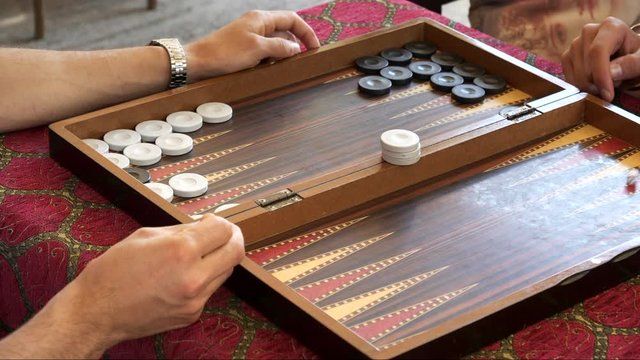
Get A Quote
How long should a game of backgammon take?
Backgammon, one of the oldest known board games, is a fascinating blend of strategy, skill, and luck. Whether you're a beginner exploring backgammon basics or a seasoned player fine-tuning your game, understanding the duration of a backgammon match is essential. So, how long should a game of backgammon take? This article will delve into the factors influencing game duration, the role of clocks in backgammon, and tips for managing your time effectively.
Understanding Backgammon Basics
The Objective of Backgammon
Before diving into the time aspect, it’s important to grasp the basics of backgammon. The primary objective of backgammon is to move all your checkers into your home board and then bear them off before your opponent does. Each player has 15 checkers, and the movement is determined by the roll of two dice. The game involves elements of strategy, luck, and skillful maneuvering of pieces.
Typical Structure of a Backgammon Game
A standard backgammon game consists of several phases:
- Opening: Players position their checkers based on the initial dice roll.
- Middle Game: Players strategically advance their checkers while blocking the opponent.
- Endgame: Players bear off their checkers to win the game.
The time taken for each phase can vary greatly depending on the players' skill levels and playing style.
Factors Influencing the Duration of a Backgammon Game
Player Skill Level
Experienced players tend to make faster decisions based on their familiarity with strategies and potential moves. Beginners, however, might take more time to consider their options and plan their moves. Therefore, a game between two seasoned players will typically be shorter than one involving novices.
Game Mode
Backgammon can be played in different formats, including casual play, match play, and tournament play. Casual games tend to be quicker, often lasting around 15-30 minutes. Tournament games, especially those with multiple rounds or specific point targets, can take significantly longer, sometimes extending over an hour per match.
Use of Doubling Cube
The doubling cube adds a strategic element to backgammon, allowing players to double the stakes of the game. The decision to double and the opponent's response can add time to the game, especially if players frequently use the cube.
Clocks in Backgammon
In competitive backgammon, clocks are often used to keep the game moving and ensure fair play. Clocks in backgammon function similarly to those in chess, giving each player a set amount of time to complete all their moves. This addition can standardize the duration of a game and prevent excessively long matches.
Clocks in Backgammon: Enhancing the Game Pace
How Do Backgammon Clocks Work?
Backgammon clocks allocate a fixed amount of time to each player for the entire game or match. When a player completes their move, they press a button on the clock, passing the time control to their opponent. This system encourages prompt decision-making and keeps the game flowing.
Benefits of Using Clocks in Backgammon
- Prevents Delays: Clocks discourage players from taking too long to make decisions, ensuring the game progresses smoothly.
- Fair Play: Each player has an equal amount of time, promoting fairness.
- Standardization: Clocks provide a standard way to measure game duration, particularly useful in tournaments.
Typical Time Controls
In tournaments, common time controls might include a base time of 12-18 minutes per player for the entire match, with a delay or increment (e.g., 12 seconds per move). This setup balances the need for thoughtful play with the necessity of keeping the game within a reasonable timeframe.
Managing Your Time in Backgammon
Effective Time Management Strategies
- Familiarize Yourself with Common Positions: The more familiar you are with typical game positions, the faster you can make decisions.
- Practice Speed Play: Regularly practicing under timed conditions can improve your ability to make quick, effective decisions.
- Prioritize Key Decisions: Spend more time on crucial moves and less on routine ones. Identifying key moments in the game can help you allocate your time efficiently.
Practicing with Clocks
To get comfortable with clocks in backgammon, practice playing timed games. This will help you adapt to the pace required in tournaments and improve your overall time management skills.
Frequently Asked Questions
How long does a typical casual backgammon game take?
A typical casual backgammon game usually takes between 15 to 30 minutes, depending on the players' skill levels and familiarity with the game.
How do clocks impact backgammon game duration?
Clocks in backgammon ensure that each player has a limited amount of time to complete their moves, which helps to standardize the game duration and prevents excessively long matches.
What is the purpose of the doubling cube in backgammon?
The doubling cube allows players to raise the stakes of the game, adding a strategic layer to backgammon. Players can double the stakes at certain points, and the opponent must decide whether to accept the double or forfeit the game.
Can beginners benefit from using clocks in backgammon?
Yes, beginners can benefit from using clocks as it encourages quicker decision-making and helps them learn to manage their time effectively during the game.
What are common time controls used in backgammon tournaments?
Common time controls in backgammon tournaments include a base time of 12-18 minutes per player for the entire match, often with an additional delay or increment of around 12 seconds per move.
Conclusion
So, how long should a game of backgammon take? The answer varies depending on several factors, including player skill level, game mode, and whether clocks are used. For casual play, a game typically lasts between 15 and 30 minutes. In tournament settings, the use of clocks ensures a more standardized duration, usually within an hour. Understanding backgammon basics and practicing with clocks can help players manage their time effectively and enjoy the game to its fullest.
At Pink Store, we offer a wide range of backgammon sets, clocks, and accessories to enhance your playing experience. Whether you are a beginner learning backgammon basics or an experienced player looking to improve your skills, our high-quality products will meet your needs. Visit Pink Store today and find the perfect backgammon set to enjoy this timeless game.


